#fleur de lys tiara
Text
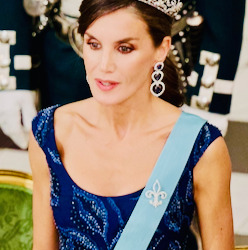



Through the Years → Queen Letizia of Spain (2,323/∞)
6 November 2023 | Queen Letizia of Spain attends a gala dinner at the Christiansborg Palace in Copenhagen, Denmark. (Photo by Carlos Alvarez/Getty Images)
#Queen Letizia#Queen Ena's Fleur de Lys Tiara#Spain#tiara#2023#Carlos Alvarez#Getty Images#through the years: Letizia
8 notes
·
View notes
Text

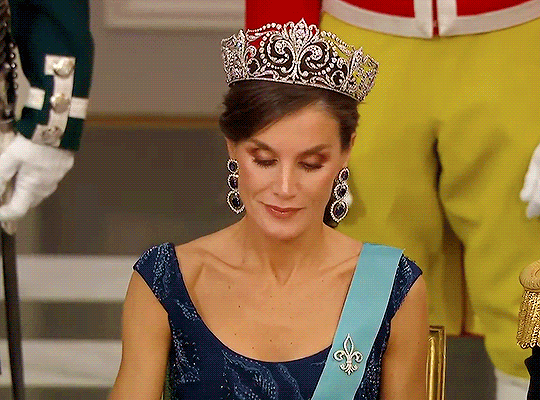

Spanish Royal Family - Queen Letizia is wearing the Spanish Fleur-de-Lys Tiara with Queen Sofia’ Sapphire Earrings, Fleur de Lys Brooch, and Queen Victoria Eugenie’s Diamond Bracelet for the State Banquet at Christiansborg Palace in Copenhagen | November 06, 2023
#royaltyedit#theroyalsandi#queen letizia#leti gif#leti gif 2023#leti 2023#leti nov 2023#leti tiara 2023#tiara 2023#spanish tiara 2023#spanish gif#spanish gif 2023#spanish 2023#spanish nov 2023#spanish visit denmark 2023#danish state banquet 2023#nov 2023#2023#spanish royal family#my gif
229 notes
·
View notes
Text

RTVE is making a new show about Queen Victoria Eugenie of Spain called 'Ena' and I'm pretty impressed with the jewelry so far. This is meant to be Ena on her wedding day in 1906 presumably before the bomb went off. The show is being made by Javier Olivares who also made 'Isabel' about Queen Isabella I of Castile and is currently filming so it won't be out for a while. The jewelry used in shows and movies is never going to look exactly like the real thing unless they spend a ton of their budget on it which isn't going to happen but I appreciate it when they at least try to replicate jewels correctly.

Queen Ena's Fleur de Lys Tiara or as it's commonly called La Buena was made by Ansorena in 1906 as a wedding gift from her husband, King Alfonso XIII of Spain. It has become the most important tiara in the Spanish collection and is now worn by Queen Letizia.
115 notes
·
View notes
Text

Fleur de Lys Tiara ♕ Queen Letizia
58 notes
·
View notes
Text
Royal Tiara Challenge
Day 6 - Favourite Spanish tiara
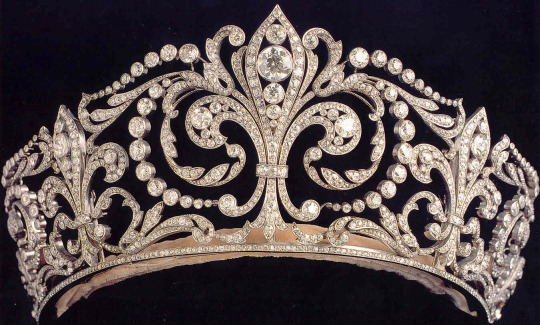
Queen Victoria Eugenie of Spain's Fleur de Lys Tiara
Known as "La Buena" (The Good One) and for a very good reason, this is a piece of jewelry that send a messages. Truly, a tiara fit for a Queen.
69 notes
·
View notes
Text

DAY 6 - Favourite Spanish Tiara
Queen ena’s fleur-de-lis tiara
The 'diadem of diamonds with three fleurs-de-lis' is known to us as the Fleur de Lys Tiara.
18 notes
·
View notes
Text
Royal Tiara Challenge 2024: Tiara you most want to see Princess Leonor wear
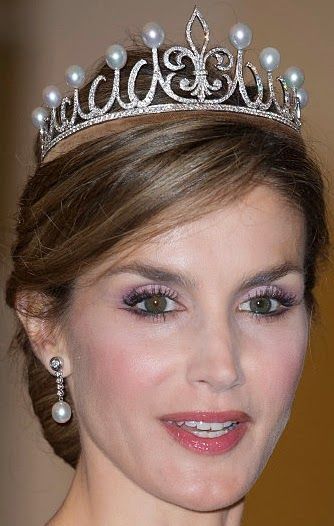
Ansorena Fleur de Lys tiara
This is definitely not my favourite tiara that belongs to the Spanish Royal Family however I’d love to see this tiara on Leonor, especially if Queen Letizia wears the larger Fleur de Lys tiara. This tiara was bought for Letizia while she was Princess of Asturias so it’d be lovely if the current Princess of Asturias also wore it. The only time that it has been worn was in 2015 for Queen Margrethe’s 75th birthday celebrations.
Honourable mention: Queen Ena’s Pearl and Diamond Tiara
9 notes
·
View notes
Text
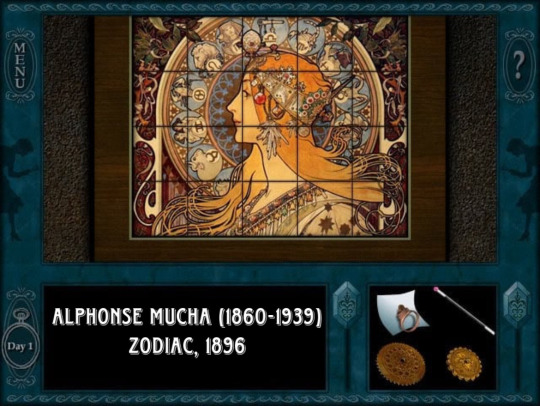
G’day, Clue Crew! Dropping in, to talk about one of my favorite artists: Alphonse Mucha. His work can be seen in several Nancy Drew games.
Alphonse Mucha, was a Czech painter, illustrator, and graphic artist, living in Paris during the Art Nouveau period, best known for his distinctly stylized and decorative theatrical posters, particularly those of Sarah Bernhardt. He produced illustrations, advertisements, decorative panels, as well as designs, which became among the best-known images of the period.
The slider puzzle box, as seen above, was featured in The Final Scene. The tiles have Mucha’s Zodiac decorating them. But this was not Zodiac’s debut in a Nancy Drew game—oh, no, no, no. She can first be seen in Abby Sideris’ bedroom, in Message in a Haunted Mansion.
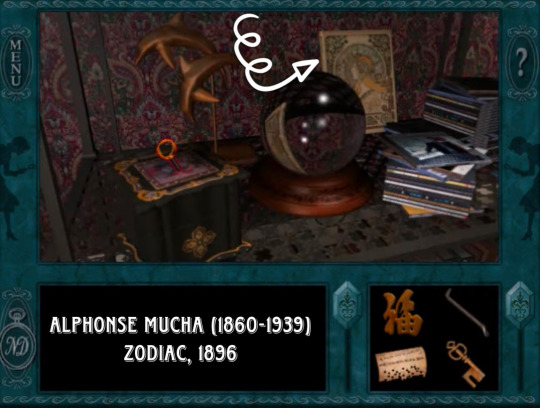
Zodiac is again seen in the gift shop of Castle Finster in The Captive Curse.

However, Zodiac isn’t the only piece of Alphonse Mucha’s work to be displayed in a Nancy Drew game. Emily Crandall, from Secret of the Old Clock, has no less than 5 Mucha pieces, in her bedroom. She displays every print from The Seasons series, on her walls.
This was Mucha's first set of decorative panels and it became one of his most popular series. It was so popular that Mucha was asked by Champenois to produce at least two more sets based on the same theme in 1897 and 1900. Designs for a further two sets also exist.
The idea of personifying the seasons was nothing new - examples could be found in the works of the Old Masters' as well as in Champenois's other publications. However, Mucha's nymph-like women set against the seasonal views of the countryside breathed new life into the classic theme. In the four panels shown here, Mucha captures the moods of the seasons - innocent Spring, sultry Summer, fruitful Autumn and frosty Winter, and together they represent the harmonious cycle of Nature.

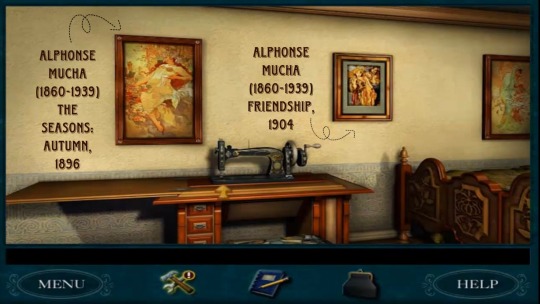
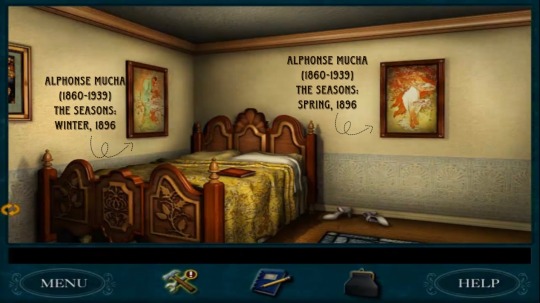
You’ll notice that the picture that “mysteriously keeps moving,” is not part of aforementioned polyptych. This Mucha piece is called Friendship. It was featured in the New York Daily News on April 3rd, 1904.
The New York Daily News referred to him as "the world's greatest decorative artist," and dedicated its Sunday Art Section to Mucha on April 3, 1904. For the illustration on the cover of that section, Mucha created a wonderful allegorical image entitled Friendship, in which America and France are each depicted as women. America, with stars on both her tiara and gown and red and white ribbons cascading from her hair, appears as the young protégé of France, who watches over her, protectively adorned with lilies in her hair and fleur-de-lys patterns on her dress. As Jirí Mucha points out, the two women are jointly "holding a wreath of lime leaves, [a] national symbol of Czechoslovakia.”

I personally adore Mucha’s allegorical style and really appreciate that he’s featured in the Nancy Drew PC games. One might even argue that Art Nouveau influences us, to this day. Perhaps it even played a part in the design and illustrations of some aspects of the games. Art is always changing—artists grow upon the backs of their predecessors. Mucha is still highly influential and relevant.
His work and the style he developed during the period of 1893 to 1903 came to define an era and forever serve as an influence to future illustrators
I loved the Alphonse Mucha pieces from the PC games, long before I went to university and wrote papers, on his work. I’d like to think I, in part, owe my love of Art Nouveau, to Nancy Drew. 🔎🖼
That is all. Happy scrolling.
#nancy drew#her interactive#clue crew#nancy drew pc games#nancy drew art#art nouveau#clk#mhm#fin#cap#alphonse mucha#secret of the old clock#message in a haunted mansion#the final scene#the captive curse
63 notes
·
View notes
Text

“I like tiaras with meaningful symbols and designs, like the Chrysanthemum Tiara from Japan, the Fleur de Lys Tiara from Spain, and even the Goat Diamond Tiara from Albania, which integrated their houses' symbols into the tiaras. They may be not the most beautiful tiaras out there, but they itself are so unique.” - Submitted by Anonymous
25 notes
·
View notes
Photo

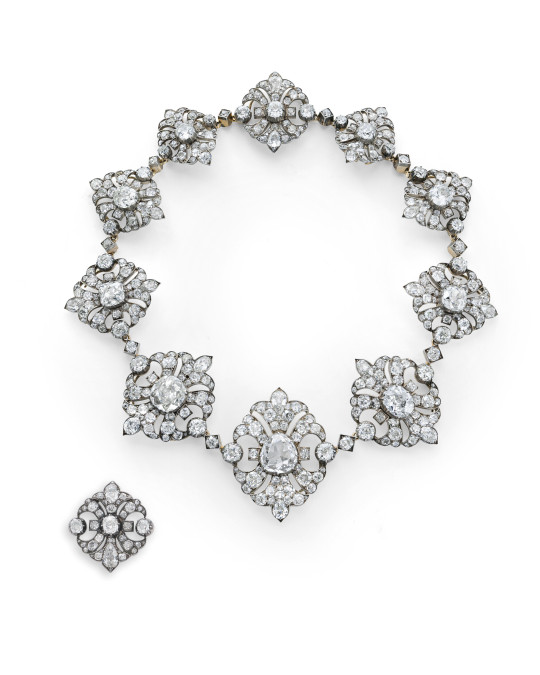
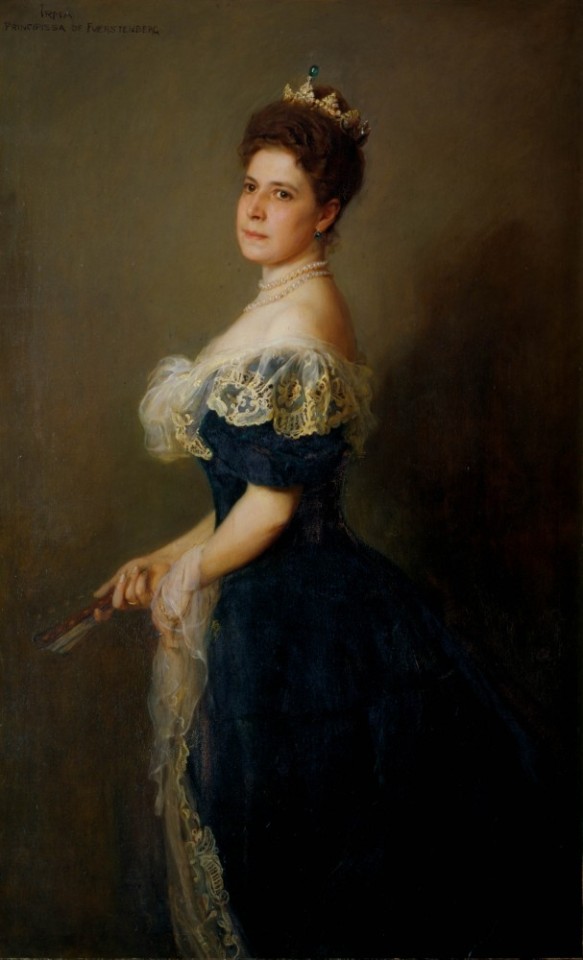
The Fürstenberg Tiara
1870s-1890s
The letter which is kept in the Fürstenberg archives, headed by Flach Mediansky & Paltscho, famous Austrian jewelers at the end of the XIX century, explains the many ways in which the extraordinary tiara can be worn. The first and most obvious one, is to wear it complete. Eleven diamond motives in the shape of a double fleur-de-lys, twenty-three pear-shaped pearls (three larger ones) are all fixed on a old-cut diamond frame. This is the way that tiara must have been worn in court by its then owner: H.S.H. the princess of Fürstenberg, née countess Irma of Schönborn Buchheim (1867-1948). Although most of their lands were located in Germany, in the south of Baden-Württemberg, the princes of Fürstenberg were princes of the Holy Roman Empire and they had received their titles from the Habsburg emperors. They also owned land in Bohemia and a very impressive palace in Vienna. Therefore, they were very much part of the Viennese high society.
The Austrian season always started in January with the New Year’s reception and ended in May with the Corpus Christie’s procession which was described by some as "God’s court ball.” Between those two dates, concerts, lavish dinners, private and official balls would take place. The most important of those events were the balls given at the Hofburg palace by the order of His Majesty Emperor Franz Joseph I. Divided in two categories: Court balls and Balls at Court. 2000 guests were invited to the Court Balls. The list would include guests from the aristocracy, but also from the political and military world. Balls at Court only included 800 guests, chosen exclusively among the higher aristocracy. The princesses of Fürstenberg were included in both lists and were also invited to opera premières and private concerts. Therefore the princesses needed quite a few tiaras, or at least a very transformable one.
In the letter, the jeweller mentions a second way to wear the tiara, simply by removing the diamond motives. This way the 23 pearls seemed to just hang among the hair. A third way, even lighter, but still impressive, was to remove the smaller pearls, leaving only the big ones. A fourth way, was to wear only the diamond motives with no pearls. There was of course a fifth way, not mentioned in the letter, to replace the pearls with other precious stones. And this is exactly what princess Irma of Fürstenberg did when she had her portrait painted by Laszlo. She replaced the central pearl with an emerald drop. The diamond motives could also be assembled to be worn as a rather impressive diamond necklace. And each diamond motive could be worn as a brooch or a hair pin.
For centuries, the Fürstenberg family had been at the very top list of the most important aristocratical families in the Habsburg Empire. The wealth and status of that family was such that in 1770, when archduchess Marie-Antoinette travelled to Versailles where she would marry the future Louis XVI of France, Donaueschingen was chosen as one of her stops. Prince Starhemberg, who was commander of the escort of the archduchess, was so amazed by the splendor of the Fürstenberg court that he wrote to Empress Marie-Thérèse, on the 3rd of May 1770:
Around three in the afternoon, we arrived at the Prince of Fürstenberg’s estate at Donaueschingen. All here is established with magnificence as if the court was that of a sovereign. All the male courtesans were wearing a very rich uniform. And the ladies, including the princess, had white silk dresses embroidered with golden lace. The Prince had all the roads of his principality rebuilt for the archduchess’ trip. It must have cost him more than 200,000 gold florins.
-Vincent Meylan
Christie’s
#tiara#necklace#fashion history#historical fashion#victorian#1870s#1880s#1890s#19th century#diamond#pearl#jewelry#austria#christies
319 notes
·
View notes
Text
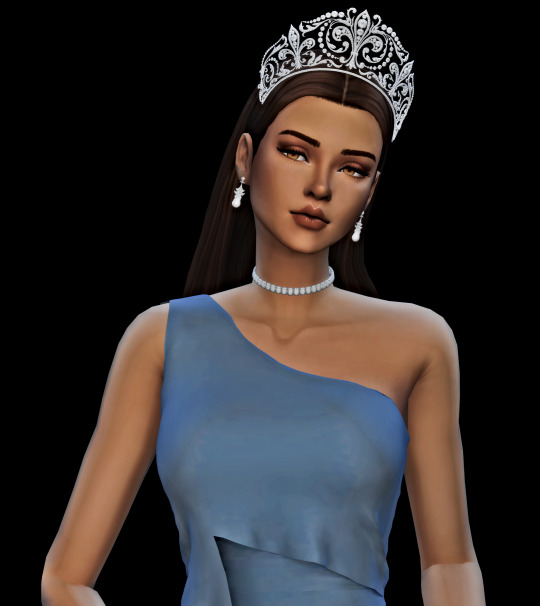
The Crown Jewel Edition: Queen Consort Ana
From State affairs to private soirées; this is an inside look into Queen Ana's favorite pieces within the Lunarian Royal Collection.
The Fleur-de-lys Tiara (Above)
This particular piece was featured at many a State Banquet and in several of Her Majesty's official portraits. Originally crafted in Pierreland by Maison de Lumeniere, the tiara was commissioned by Crown Prince Jean Charles Valois in 1874 to commemorate diplomatic relations with Lunaria. It had been worn by Queen Consort Katrina and her daughters before falling out of favor in the early 1900s, when kokoshniks became the trend for the Royal Family. Queen Ana first brought it out of obscurity in the 1970s while attending a State Banquet in Rivenia as a part of her Marriage Tour.

The Ely Meander Tiara
Gifted to Queen Clarisse in the late 1950s by the 10th Duke of Ely, this tiara was personal gift to Ana when her engagement to then-Crown Prince Vincent was announced. She most notably wore the piece during both her husband's Silver and Golden Jubilees. Her Majesty gifted the tiara to her only daughter – and now the Queen of Windsor – Ashli, who wears it frequently for official portraits.
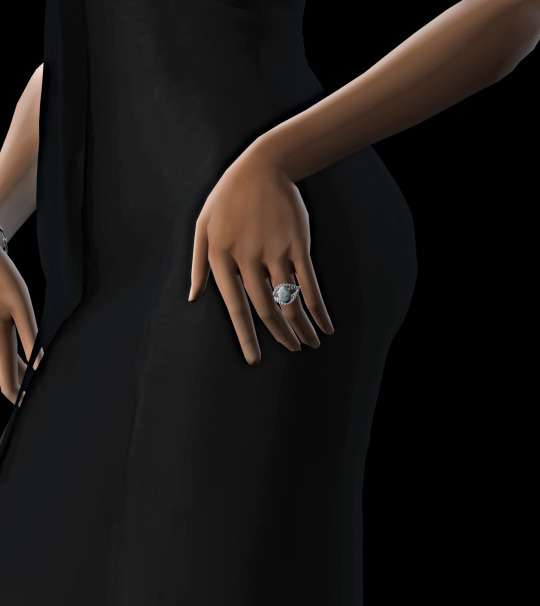
Queen Ana's Engagement Ring
Designed personally by then-Crown Prince Vincent using a large, 12-carat aquamarine surrounded by thirty-six diamonds on a split-shank design, Queen Ana's engagement ring was a stunning piece that many ladies in Lunaria were jealous of. The ring was returned to the Royal Vault upon her death twenty years ago, where it will remain alongside other Royal engagement rings.

The Brindleton Sapphire Kokoshnik Tiara
This piece was bought during a private auction of the Brindleton Empire's Royal tiaras. The auction was rumored to have occurred because of Emperor Alaric's overspending of the National Treasury. Although the rumors were never confirmed, several high profile pieces from the Imperial Family's collection were sold to other families around the world, shaming Emperor Alaric, whom also sold several of his wife, Empress Amira's, personal jewelry inherited from her family. The purchase of the kokoshnik and other pieces apparently soured his relationship with King Vincent and Queen Ana in the coming years.
Adding insult to injury, Her Majesty wore the kokoshnik to a banquet celebrating Brindleton's surrender to the combined military forces of Windsor and Lunaria during Windsor's War for Independence. The Brindleton Empire has remained a military and political rival of Lunaria ever since.
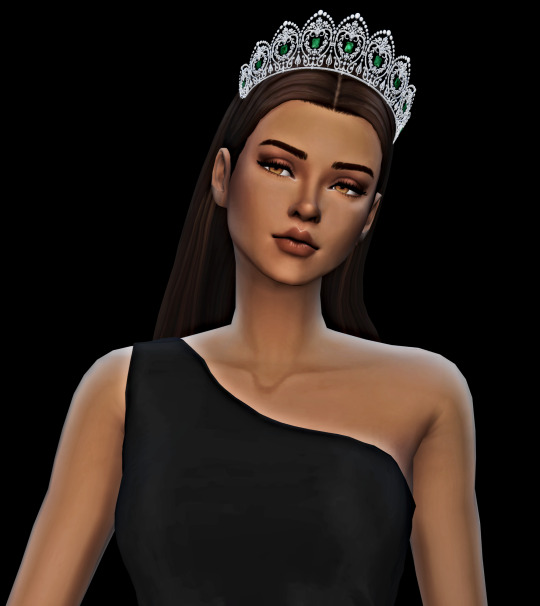
The Belvedere Palm-Heart Tiara
This piece was a gift to Queen Consort Lilith–then the Duchess of Belvedere–in 1793 as a wedding gift from the province her husband ruled over. It features nine emeralds sourced from the area and was designed to look like the palm-heart flowers native to the land.

The Honeysuckle Loop Tiara
A diamond and platinum piece which originally belonged to the Brindleton Imperial Family like the Sapphire Kokoshnik listed above. Her Majesty often wore the tiara for foreign formal events.

Queen Katrina's Pearl Wedding Earrings
Originally worn by Queen Consort Katrina in 1841 on her wedding to then-Crown Prince Edward (soon-to-be known as the Mad King Edward IV), these earrings were originally part of a lovely parure. The necklace, bracelet, and tiara were unfortunately lost in a fire at Windenburg Palace in the early 1920s.
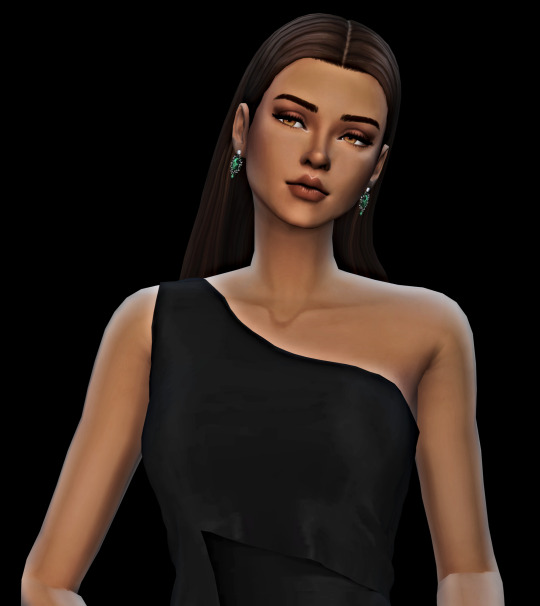
Queen Ana's Emerald Laurel Earrings
These earrings were bought by the Queen before she married into the Royal Family. They were designed by court jeweler Simtier from their Mythic collection and were purchased privately by Her Majesty for §30,000. They remain within the Quinn family's private collection and are being kept by King Arden currently.

Queen Ana's Birthday Earrings
A gift to the Queen Consort from her three children, these earrings were her most beloved pieces of jewelry. The earrings are another Simtier piece, personally designed for her, and were passed down to her eldest son's wife after her death.
The earrings were most recently worn by Princess Annaliese, who wore them for her eighteenth birthday celebration.
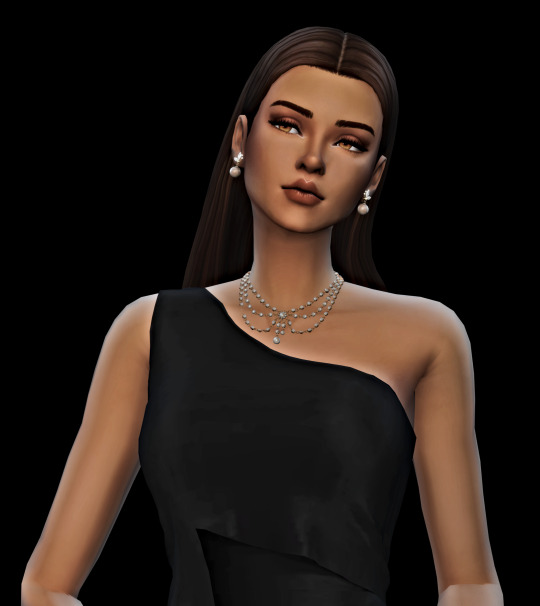
The Piraeus Pearl Set
This pearl necklace and earrings set are a Harold family heirloom. Upon her father's death she was able to inherit a few key pieces after his Earldom was dissolved back into the Crown. Her Majesty only wore the set for intimate private events.

Bordeauxian Pearl Wedding Necklace
This necklace is one of the oldest pieces within the Royal Collection, dating back almost six hundred years, and is a wedding gift from King Francois of Bordeaux to Queen Consort Marylene.
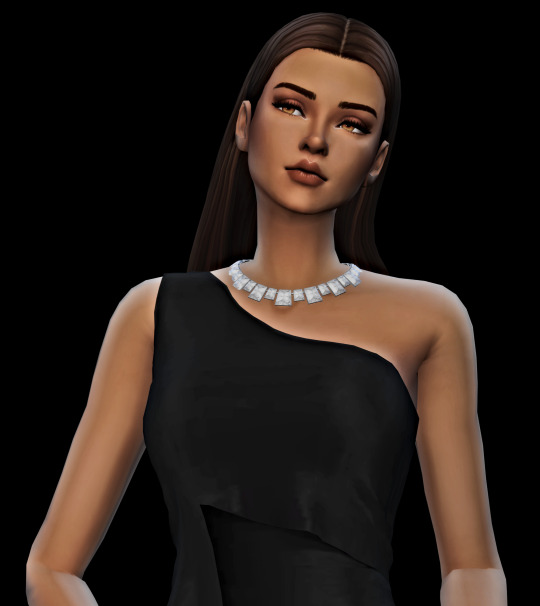
The Celestri Diamond Alliance Necklace
This necklace, which consists of millions of simoleons worth of Celestri Diamonds, was once one of the Celestre Imperial Family's prized jewelry pieces.
The necklace was given over as a part of peace negotiations twenty years after Lunaria split from the Empire of Celestre. The Emperor at the time, Nikolas II, was the half-brother of the first King of Lunaria, Rhysander I, and regretted the War of Secession that occurred between the two nations after a personal dispute between the two.
Queen Ana wore the necklace most famously during the funeral of her in-laws, the former King Richter and Queen Clarisse, but was often depicted wearing it during official portraits. The necklace has also been continuously worn during official visits to Celestre.
23 notes
·
View notes
Photo

#Queen Letizia#Queen Ena's Fleur de Lys Tiara#Queen Elizabeth#Brazilian Aquamarine Tiara#Spain#Britain#tiara#2017
31 notes
·
View notes
Text

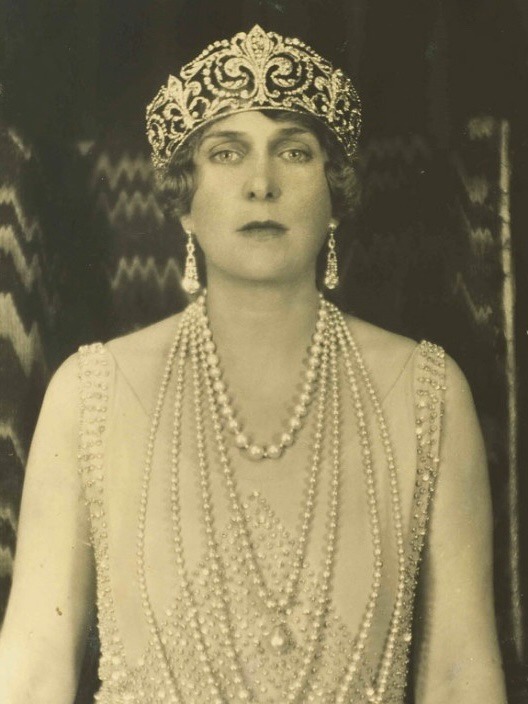
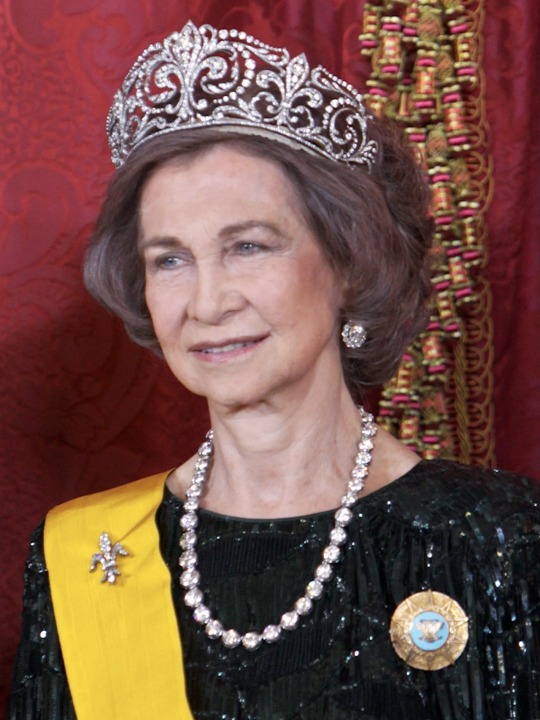
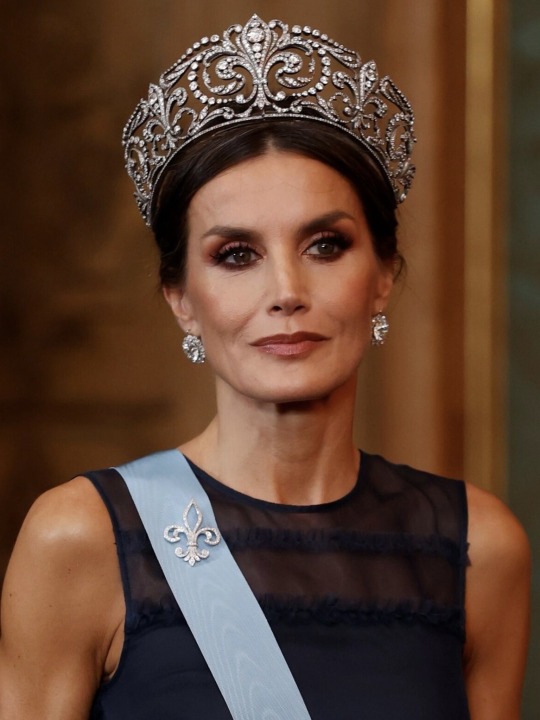

Royal Tiaras Highlights: The Spanish Fleur de Lys Tiara
The tiara was a wedding present from King Alfonso XIII to his bride Queen Victoria Eugenia of Spain 1906. It was made by Ansorena of Madrid. The tiara features three large fleur de lys motifs, each filled with large round diamonds, and connected by swirls and scrolls including more significantly sized diamond; and it’s all set in platinum. The fleur de lys is a symbol of the House of Bourbon.
Via The Royal Order of Sartorial Splendor
#tiaras highlights#royal tiaras#royal jewelry#tiaras#spanish royal family#srf#queen letizia#queen sofia
61 notes
·
View notes
Text

TIARA ALERT: Queen Letizia of Spain wore Queen Ena’s Fleur de Lys Tiara for the banquet during the state visit to Denmark at Christiansborg Palace in Copenhagen on 6 November 2023.
#Tiara Alert#Queen Letizia#Spain#Spanish Royal Family#tiara#tiaras#diadem#diadems#royal jewels#royaltyedit
113 notes
·
View notes
Text



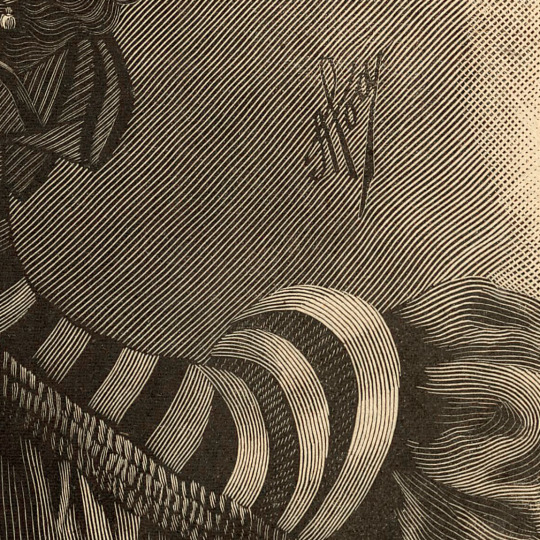
Cover details.
La Mode nationale, no. 25, 26 juin 1897, Paris. No. 1. — (1) Coiffure de mariée. (2) Coiffure de dame agée. Bibliothèque nationale de France
(1) Corsage de robe de mariée en satin ivoire, forme veste à revers habit, ouvert sur une chemisette drapée coupée au milieu par une bande droite. Col drapé montant avec ruche de dentelle au-dessus. Manches Empire. Long voile de tulle de soie relevé à la juive sur le sommet de la tête, où il forme diadème retenu par un bouquet de fleurs d'oranger.
(2) Corsage de satin vert émeraude, coulissé dans le haut, en forme de pointes, sur un plastron ou foulard vert et paille à col montant, avec ruche au-dessus; manches Empire. Toquet de tulle grec noir, s'élevant en diadème au-dessus de la tête, avec, au-dessus du front, une demi couronne de fleurs mélangées, cachant le pied de deux plumes s'autruche, dont l'une est couchée sur le côté, et l'autre s'élève au-dessus du toquet, avec plumes de coq s'élevant avec elle en aigrette.
—
(1) Wedding dress bodice in ivory satin, jacket style with habit lapels, open over a draped shirt cut in the middle by a straight band. High draped collar with lace ruffle above. Empire sleeves. Long veil of silk tulle raised in the Jewish style on the top of the head, where it forms a tiara held by a bouquet of orange blossoms.
(2) Emerald green satin bodice, drawn at the top, in the shape of points, over a green and straw plastron or foulard with a high collar, with a ruche above; Empire sleeves. Toquet of black Greek tulle, rising like a diadem above the head, with, above the forehead, a half crown of mixed flowers, hiding the foot of two ostrich feathers, one of which is lying on the side, and the other rises above the cap, with cock-feathers rising with it in crest.
#La Mode nationale#19th century#1890s#1897#on this day#June 26#periodical#fashion#fashion plate#detail#description#bibliothèque nationale de france#dress#collar#veil#stripes
17 notes
·
View notes
Note
You did least favourite tiara, what about favourite tiaras?
Great idea! I think I'll prick my favourite tiaras from each country, and no commentary just so that this post doesn't ramble forever and ever. Just know that these are the ones that I like for either aesthetic or historical purposes. I'd say the best collections go to the British, Swedish, and Spanish in that order. Out of the fake monarchies Greece has some bangers in there:


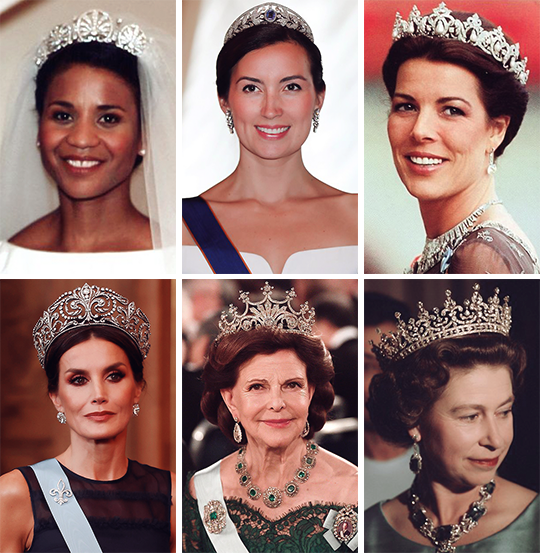
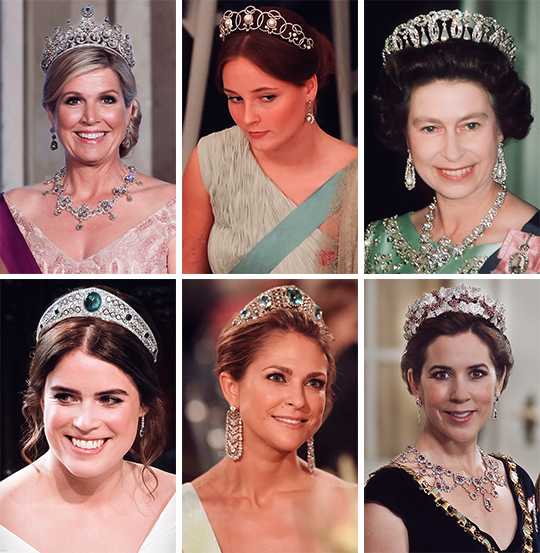
Belgium 🇧🇪 - Queen Astrid of Belgium's Nine Provinces Tiara (as a bandeau)
Brunei 🇧🇳 - Anisha Isa Kalebic's Diamond Tiara
Denmark 🇩🇰 - Princess Louise of the Netherlands' Pearl Poiré Tiara
Egypt 🇪🇬 - Queen Nazli of Egypt’s Diamond Tiara
France 🇫🇷 - Empress Josephine’s Cameo Tiara (it's in the Swedish vault but it's French in every other way)
Germany 🇩🇪 - The Prussian tiara (it's of German origin but is currently with the Spanish due to royal intermarrying)
Greece 🇬🇷 - Khedive of Egypt Tiara
Italy 🇮🇹 - Queen Margherita of Italy's Pearl & Diamond Tiara
Iran 🇮🇷 - Empress Farah of Iran’s Turquoise Tiara
Japan 🇯🇵 - Imperial Chrysanthemum Tiara
Jordan 🇯🇴 - Queen Noor's Sunburst Tiara
Lesotho 🇱🇸 - 'Masenate Mohato Seeiso's wedding tiara
Liechtenstein 🇱🇮 - Princess Maria Kinsky's Honeysuckle Tiara
Luxembourg 🇱🇺 - Grand Duchess Marie Adélaïde of Luxembourg's Sapphire Tiara
Monaco 🇲🇨 - Princess Charlotte of Monaco’s Pearl Drop Tiara
The Netherlands 🇳🇱 - Queen Wilhelmina of the Netherlands's Stuart Diamond Tiara
Norway 🇳🇴 - Princess Ingeborg of Sweden's Pearl Circle Tiara
Russia 🇷🇺 - Grand Duchess Vladimir Tiara (of Russian origin but is with the Brits)
Spain 🇪🇸 - Queen Victoria Eugenie of Spain's Fleur de Lys Tiara
Sweden 🇸🇪 - Nine-Prong Tiara
United Kingdom 🇬🇧 - Girls of Great Britain and Ireland Tiara
BONUS - The Greville Emerald Kokoshnik 🇬🇧
BONUS - The Swedish Aquamarine Kokoshnik 🇸🇪
BONUS - Queen Desiree of Sweden’s Ruby Parure Tiara 🇩🇰
4 notes
·
View notes